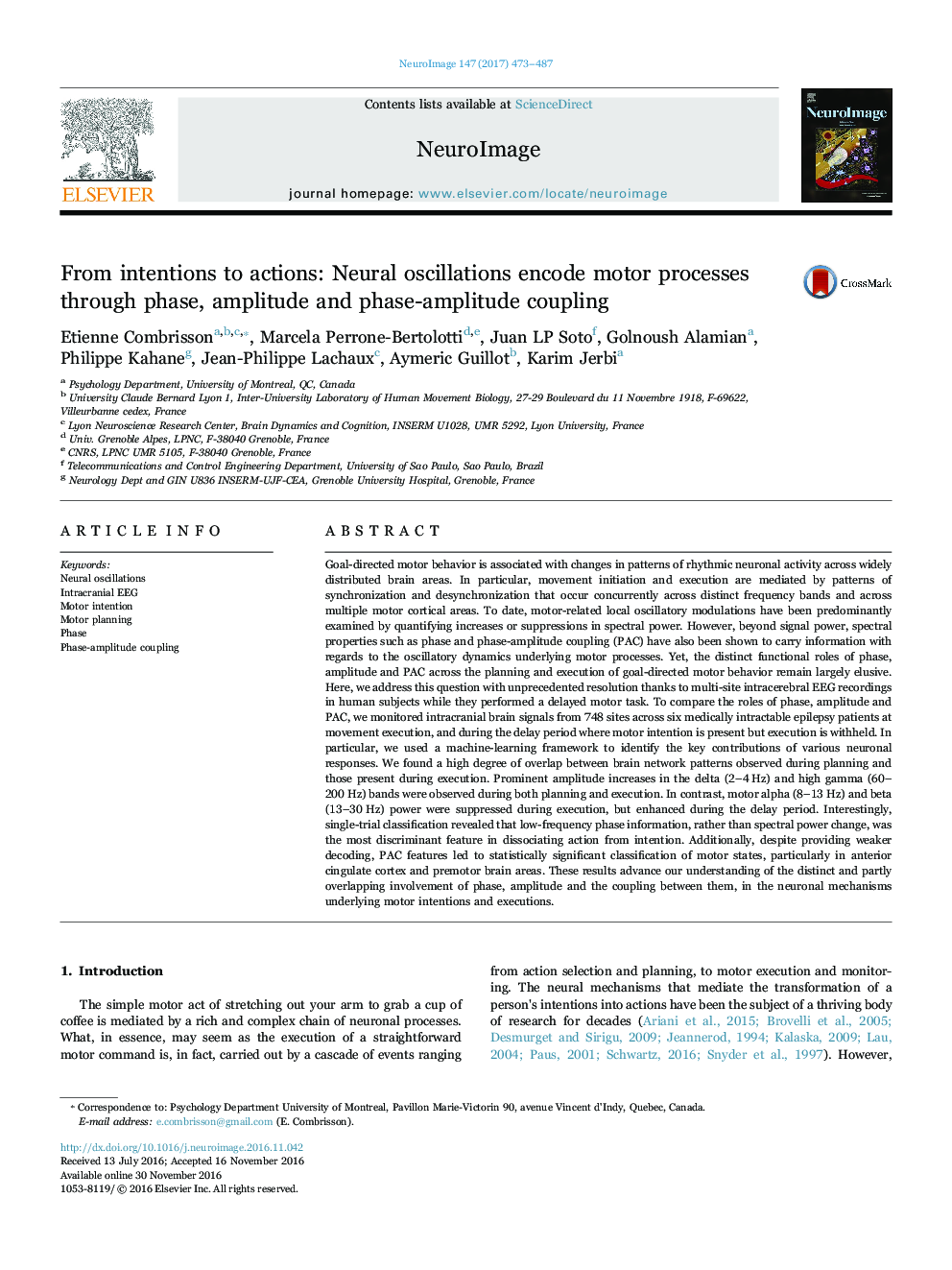| کد مقاله | کد نشریه | سال انتشار | مقاله انگلیسی | نسخه تمام متن |
|---|---|---|---|---|
| 5631519 | 1580863 | 2017 | 15 صفحه PDF | دانلود رایگان |
Goal-directed motor behavior is associated with changes in patterns of rhythmic neuronal activity across widely distributed brain areas. In particular, movement initiation and execution are mediated by patterns of synchronization and desynchronization that occur concurrently across distinct frequency bands and across multiple motor cortical areas. To date, motor-related local oscillatory modulations have been predominantly examined by quantifying increases or suppressions in spectral power. However, beyond signal power, spectral properties such as phase and phase-amplitude coupling (PAC) have also been shown to carry information with regards to the oscillatory dynamics underlying motor processes. Yet, the distinct functional roles of phase, amplitude and PAC across the planning and execution of goal-directed motor behavior remain largely elusive. Here, we address this question with unprecedented resolution thanks to multi-site intracerebral EEG recordings in human subjects while they performed a delayed motor task. To compare the roles of phase, amplitude and PAC, we monitored intracranial brain signals from 748 sites across six medically intractable epilepsy patients at movement execution, and during the delay period where motor intention is present but execution is withheld. In particular, we used a machine-learning framework to identify the key contributions of various neuronal responses. We found a high degree of overlap between brain network patterns observed during planning and those present during execution. Prominent amplitude increases in the delta (2-4Â Hz) and high gamma (60-200Â Hz) bands were observed during both planning and execution. In contrast, motor alpha (8-13Â Hz) and beta (13-30Â Hz) power were suppressed during execution, but enhanced during the delay period. Interestingly, single-trial classification revealed that low-frequency phase information, rather than spectral power change, was the most discriminant feature in dissociating action from intention. Additionally, despite providing weaker decoding, PAC features led to statistically significant classification of motor states, particularly in anterior cingulate cortex and premotor brain areas. These results advance our understanding of the distinct and partly overlapping involvement of phase, amplitude and the coupling between them, in the neuronal mechanisms underlying motor intentions and executions.
Journal: NeuroImage - Volume 147, 15 February 2017, Pages 473-487
